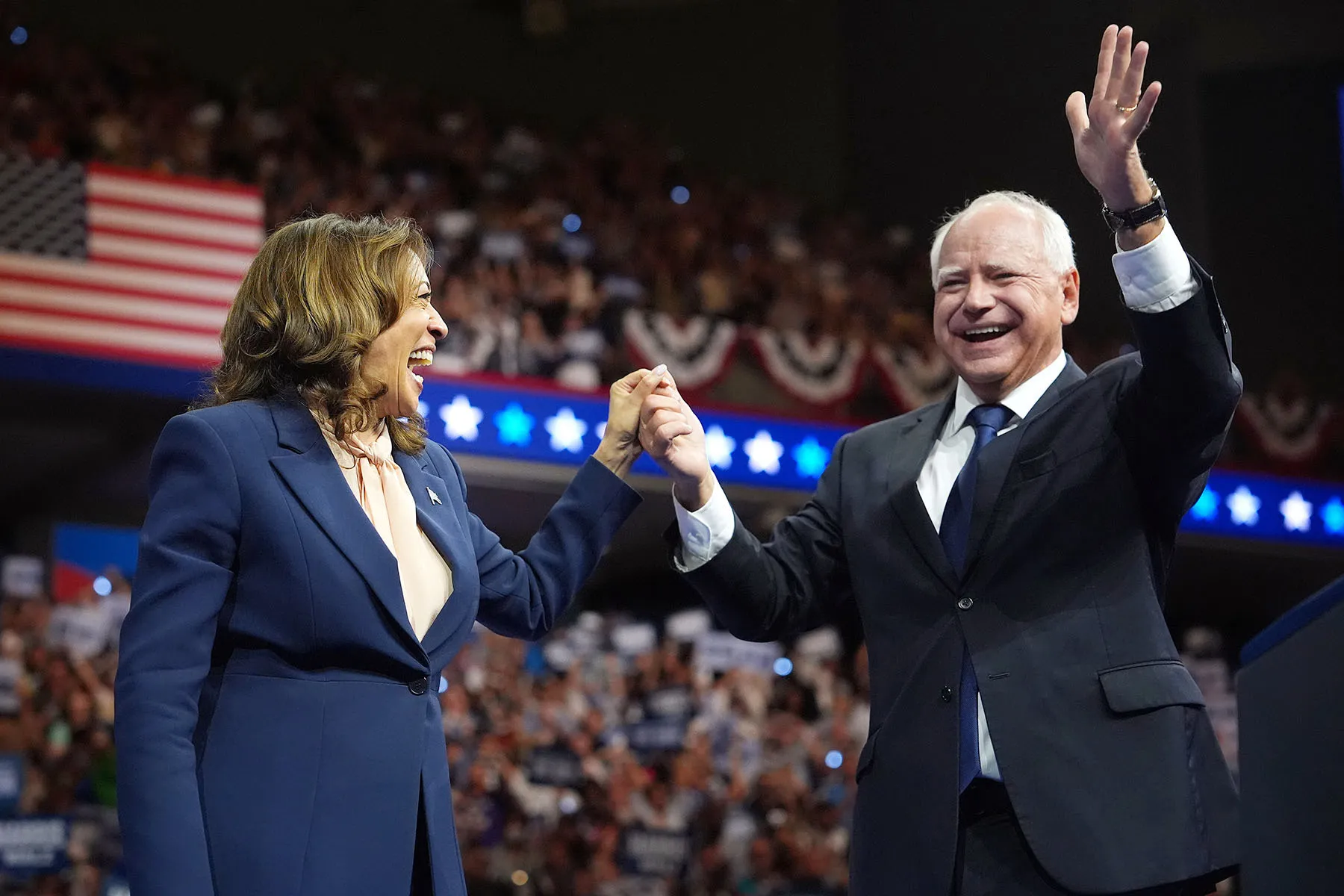In a strategic move, Vice President and Democratic Presidential nominee Kamala Harris recently selected Minnesota Governor Tim Walz as her running mate and captured countless headlines. Whether in politics or in business, it’s crucial to prepare meticulously to share news about major new leaders of your organization. A well-planned announcement encourages momentum, inspires confidence, and sets up both employees and external stakeholders for a smooth transition. Here are best practices for introducing a leadership change including actionable steps for any organization facing a moment of change.
Meet With the Team Beforehand
In the world of media, everything is on the record—there are no takebacks, and corrections are rare. Media interactions are often reactive and urgent, making it challenging to prepare once questions start rolling in. This is why media prep with incoming leadership is essential before they externally step into their new role.
Introducing the incoming leader to your PR team in a low-pressure setting allows them to understand the current media landscape and how the in-house marketing team collaborates with PR. This meeting is a prime opportunity to align on key messages that reflect the company’s overall strategies and values. Additionally, exchanging contact information and establishing clear communication protocols can help both teams quickly coordinate when news arises, ensuring everyone is on the same page.
Make a Plan
First, make sure you’re giving the new leader time to get to know the organization before offering the leader for interviews. Having a quote from the new leader is good, but there’s no expectation for them to do interviews on Day 1. Next up, make sure you have consistent language about why the former leader is leaving because reporters are likely to inquire.
Once that’s in order, developing a strategic, tiered order of operations for communicating personnel changes is vital to maintaining trust and controlling the narrative. Whom to address first, second and third? There are donors to consider, VIPs, partnering organizations and, of course, staff. Large donors, for example, do not like to be surprised by reading about management changes within organizations they support by reading about it in the media. The order in which to address each of these stakeholders may depend upon the organization and its unique goals and relationships.
Also, how to address each stakeholder should be considered. Will management call or videoconference-in large funders, request a meeting, or send an email? The answer to this question is, “it depends.” Personal relationships are important. Some funders may want a videoconference, others may want to be taken to lunch. For some, an email might be sufficient.
Organizational staff may be the last to be informed just before the public or media. Though ensuring staff know before public announcements are made demonstrates organizational respect and transparency and fosters a culture of inclusion. This approach also allows for managing internal reactions and preparing employees for potential external inquiries. Consider, here too, how to address staff. Will sending an all-staff email end up in the hands of media? Is hosting a group meeting better? If so, will cell phones be permitted? The possibility and timing of information getting outside organization walls should be taken into consideration when making all of these decisions.
In all cases, be sure to have all media materials prepared in advance of sharing the news with the staff because you’ll want to immediately follow the internal announcement with an external announcement, for fear of having the information leaked.
Ensure a Smooth Rollout
When announcing a leadership change externally, tailor your strategy based on the leader’s position and the prominence of the company. For high-profile transitions, consider offering an exclusive to a top-tier publication or sending the news under embargo to select media outlets to generate controlled, high-impact coverage. Additionally, a wire announcement can help disseminate the information widely and efficiently. If multiple PR agencies are involved, clearly define roles and responsibilities to ensure a cohesive approach. This might include dividing the media list and coordinating outreach efforts to maximize coverage. A well-coordinated strategy ensures the announcement reaches the right audiences through the most effective channels, reinforcing the company’s narrative and managing public perception during the leadership change.
Whether navigating the complexities of the political arena or managing a business, the way you announce a leadership change can significantly impact your organization’s future. By thoroughly preparing your team, crafting a strategic communication plan, and ensuring a smooth rollout, you can control the narrative, build trust, and guarantee a seamless transition. By following these best practices, your organization can thrive amidst significant leadership transitions. Teak Media + Communication has helped socially responsible companies promote new leadership transitions and can help you with this and other developments. Visit our services page to learn more about what we can do for you.


